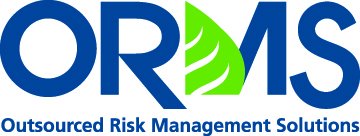Navigating the Perils of CRE Lending Risk
Giving Thanks for a Bountiful CRE Market
November 21, 2019The Secret Sauce, Part I
January 28, 2020Navigating the Perils of CRE Lending Risk

Commercial real estate lending is not unlike sailing the high seas. In the Age of Exploration, ship captains relied on specialized instruments like the compass and quadrant and an experienced, dedicated crew to safely circumnavigate the globe. Similarly, lenders need access to proven tools and trained experts to manage the many risks inherent to commercial lending. As important as commercial real estate lending is to a financial institution’s performance, it is also fraught with peril. Lenders confront an array of potential liabilities, including declining credit scores and collateral values, property contamination, fluctuating interest rates, and swelling concentrations.
To navigate these precarious waters, lenders should take a crow’s-nest view of their CRE loan portfolio through a comprehensive risk management program. The best programs assess risk impacts at every level from the individual credit, to the loan portfolio, to the enterprise as a whole.
Here are the essential steps to follow in implementing a prudent risk management program for CRE lending:
- Identify risk: Risk management begins with identifying and ranking the most serious risks in your organization. In lending, critical risks generally fall within the “5 Cs of Credit”: capacity, collateral, conditions, capital, and character. In commercial real estate lending, an understanding of collateral risk is paramount. But, don’t forget about the all-important compliance risk – commercial and residential real estate lending are subject to different rules and guidelines. Make sure you are fully compliant with the latest guidance, and your policies and procedures cover all requirements.
- Source risk: Once you’ve identified the most critical exposures, it’s time to determine the root causes of these risks. Are they concentrated in a particular area of your portfolio— a certain industry, geographic region, or type of collateral? Identify areas for adjustment in your program – including deal types, pricing, terms, collateral requirements, and recourse policies.
- Measure risk: Just as navigators relied on tools like sextants and hourglasses to track their progress across unknown waters, lenders can measure risk using a variety of methods. At the portfolio level, these may include stress testing for interest rate changes, or measuring concentration percentages by industry, aggregate borrower exposure, or geography. For individual loan requests, risk is measured through collateral appraisals, environmental assessments, guarantor credit reports, and sensitivity analysis, among other methods.
- Evaluate risk: It’s important to have consistent, objective tools for evaluating risk in a particular deal and across your CRE portfolio. A well-designed risk rating system is critical for this task. The best rating methodologies are numerical, well-stratified, and rely primarily on quantitative data. This ensures that all individual deals will be subjected to the same rigorous criteria and evaluated on an even playing field. It will also ensure the overall risk in the portfolio won’t drift over time based on the shifting winds of loan officer bias.
- Mitigate risk: Whereas the ship captains of old relied on sails and rudders to adjust their progress, lenders have numerous tools at hand for risk management and mitigation. Prior to closing, you can request additional collateral, borrower equity, or personal guarantees to offset perceived weaknesses. The SBA’s loan guarantee program is ideal for enabling loans to riskier industries like food service and hospitality, to newer businesses, or to business owners with less experience. At the portfolio level, diversification is a time-tested strategy for spreading risk over a wider ocean.
- Monitor risk: Risk management doesn’t end when the deal is done. It is just as important to monitor how your portfolio tacks over time, using tools like site visits, annual risk reviews, periodic risk rating adjustments, and risk migration reports. Pay particularly close attention to negative trends like rising delinquency and charge off ratios, and declining collateral valuations.
Follow the North Star
Fortunately, you’re not alone on this voyage. An outsourced risk management firm like ORMS can help you develop policies and procedures for a tightly woven risk management program, relying on years of experience and best practices gleaned from leading banks’ programs. Some firms offer services like site visits, tax roll reviews, and insurance record tracking to help monitor ongoing risk in the portfolio.
Firms like ORMS also assist financial institutions at the implementation level, by managing the environmental risk assessment and appraisal review processes from beginning to end. ORMS helps lenders manage their property risk program by evaluating, developing, implementing, and monitoring due diligence policies and procedures required by regulators for commercial real estate. Embark on your risk management journey today by calling us at 877-407-ORMS (6767) and let us help you implement a ship-shape CRE lending risk management program.

